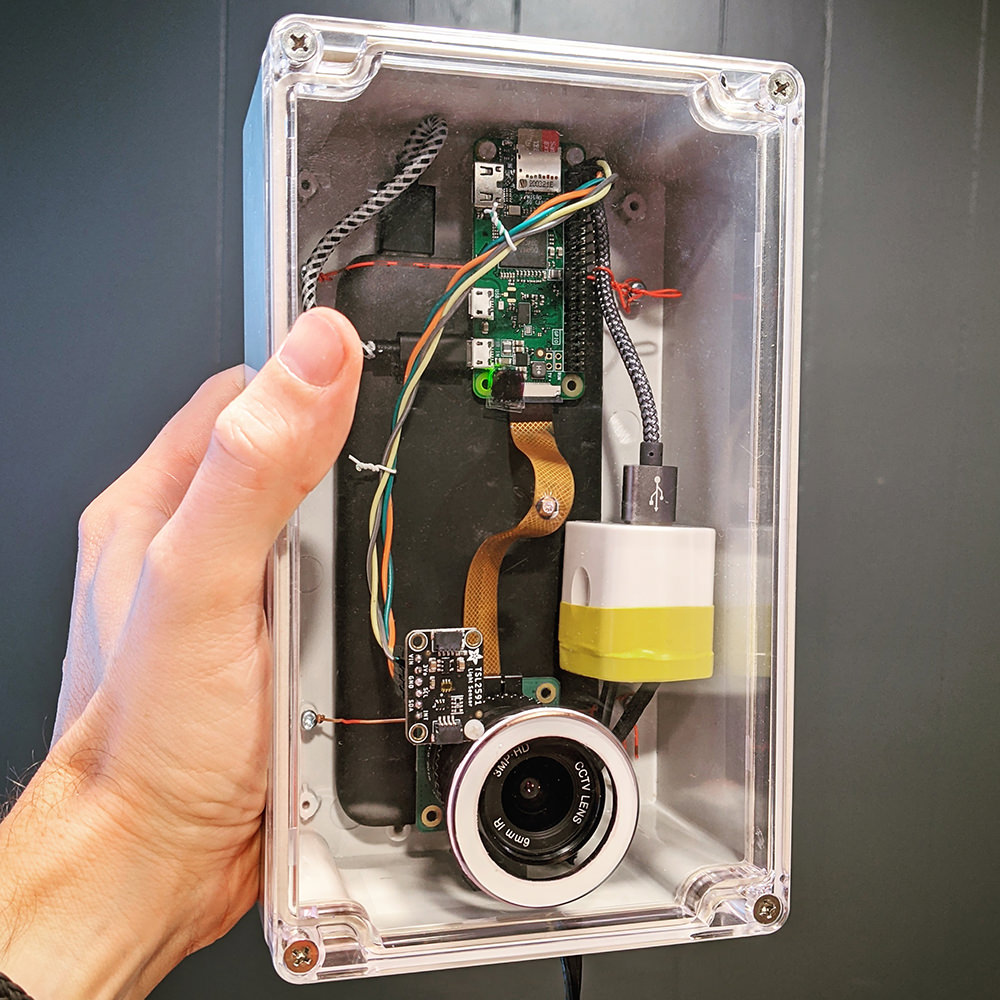Long Term Timlelapse v2 & v3
February 8th 2021
I have been working on and off on building out better timelapse systems. v2 used the updated Raspberry Pi HQ Camera, a more serious plastic case, and a battery backup among other things.
So, the v2 setup is better by far than the first setup. The enclosure is actually waterproof, the images are higher quality, and the system runs even if the power goes out.
v3 is a slight upgrade adding a high dynamic range light sensor to speed up figuring out proper exposure for the photos.
v3 Parts List
| Item | Cost | Supplier |
|---|---|---|
| Raspberry Pi Zero Camera Cable | $2.99 | https://chicagodist.com/ |
| Raspberry Pi HQ Camera Wide Angle Lens | $30.00 | https://chicagodist.com/ |
| Raspberry Pi HQ Camera | $50.00 | https://chicagodist.com/ |
| Light Sensor – Adafruit TSL2591 | $6.95 | https://www.adafruit.com/ |
| Raspberry Pi Zero W | $10.00 | https://www.adafruit.com/ |
| Power Bank – RavPower 10000mAh 5V/3A* | $33.27 | https://www.ravpower.com/ |
| MicroSD – SanDisk 128GB Extreme | $23.99 | https://www.amazon.com/ |
| USB Wall Charger – Ailkin | $4.50 | https://www.amazon.com/ |
| 6″ USB A to Micro USB cable | $4.00 | https://www.amazon.com/ |
| 6″ USB A to USB C cable | $4.00 | https://www.amazon.com/ |
| Power Cord | $5.00 | https://www.amazon.com/ |
| Lens Filter – Marumi 46mm EXUS** | $34.68 | https://www.amazon.com/ |
| Project Case Hammond – RZ0269C | $17.30 | https://mouser.com/ |
| Total | ||
| $226.66 |
*This power bank can do pass-through charging, so acts like a UPS for the Pi. In initial testing it seems to run the Pi and camera for around 24 hours.
**Good filters are really expensive. This filter seems to shed water and self-clean much better than others I’ve tried.
Annoyingly, the software has gotten complicated. It seems like you could just tell the camera to shoot a photo every 10 minutes and you’d be good to go, but the camera’s auto exposure only works during well-lit parts of the day. Once you hit dusk the photos are solid black. So, I had to write an auto-exposure system.
Also, There are a couple of bugs with the newer RaspberryPi HQ Camera software and long exposures take 4x the shutter speed. I think I’ve found workarounds for most of the bugs, and with a non-obvious set of options you can reduce the long exposure time to 2x the shutter speed.
Hopefully in the next few weeks I’ll have some long-term samples from the garden timelapse. Sarah & I moved late December, so the timelapse final garden timelapse will run 05/19/2020 – 12/21/2020.
